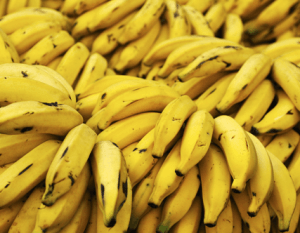Researchers raise alarm over spread of banana virus in Nigeria
 There is a growing menace of a virus that is affecting banana trees in Nigeria, researchers have said, according to a press release issued by the International Institute of Tropical Agriculture (IITA).
There is a growing menace of a virus that is affecting banana trees in Nigeria, researchers have said, according to a press release issued by the International Institute of Tropical Agriculture (IITA).
The researchers are drawing attention to the increasing spread of the banana bunchy top virus (BBTV) in Nigeria. The country is West Africa’s second largest producer of the fruit.
“Systematic studies on yield losses have not been done but empirical observations indicate 50 to 90% loss in the affected region,” says Dr Lava Kumar, Virologist at the IITA.
He indicated that, “There is a severe shortage of clean planting material,” calling for urgent management actions to prevent further spread and also help farmers in the affected areas.
Dr. Kumar warned that, “If not checked the virus will devastate banana farms, and jeopardize the livelihoods of millions of farmers who earn their livelihoods from the crop.”
Nigeria produces 2.74 million tons of banana, according to the Food and Agriculture Organization (FAO), making the crop one of the important staples in the country.
The effect of the virus on banana fields is believed, will have a negative impact on the country’s economy, and thwart efforts towards food security.
Meanwhile, the disease has been recognized in 14 countries in Africa; 13 of these are in sub-Sahara Africa which represents a combined banana production area of 2.28 million ha, contributing 19.75 million tons of fruit per annum , according to the FAO.
The disease is also said to be common in all the major banana production regions in DRC, Congo Brazzaville, Burundi, Rwanda, Malawi, Gabon, Equatorial Guinea, and Zambia. Whereas, disease spread is limited to a few regions in Angola, Benin, Cameroon, and Nigeria.
BBTD was first reported in Africa in 1901, however extensive spread into new production areas were observed during the last two decades. The disease has very recently invaded the Bénin (first reported 2011) and Nigeria (first reported in 2013) in West Africa.
According to Dr. Rachid Hanna, entomologist at IITA, “The virus is also spread through an insect, banana aphid (Pentalonia nigronervosa), which is widespread in all the banana and plantain-producing areas in Nigeria and many parts of the world.”
.
Infected banana plants become progressively smaller and stand more erect giving the plant a bunchy appearance. Plants infected early in their growth do not produce fruits resulting in total loss of yield, while plants infected at later stages may produce deformed fruits. The plant may eventually die, but often remains with its lateral shoots which serve as a source of infection for further spread.
By Emmanuel K. Dogbevi
